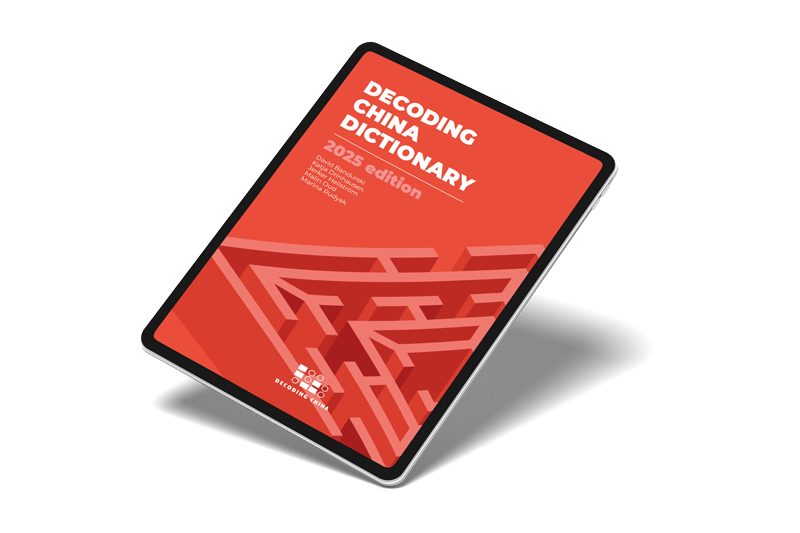
KEY TERM
Gender Equality
[ 性别平等 ]
[ 性别平等 ]
Gender Equality

Patriarchal structures persist in society and the Party itself. Women are encouraged to contribute to nation-building, while activism that challenges Party authority or traditional family structures is repressed.
Brief
Gender equality signifies equal rights and opportunities for individuals of all genders, ensuring that everyone has the same access to resources and decision-making processes. This principle is established in the Universal Declaration of Human Rights (UDHR), which asserts that “All human beings are born free and equal in dignity and rights.” The Convention on the Elimination of All Forms of Discrimination Against Women (CEDAW) further clarifies that discrimination against women includes any distinctions or exclusions based on sex that hinder women’s recognition, enjoyment, or exercise of their human rights and fundamental freedoms, establishing equality with men in all areas.
Mao Zedong’s widely cited assertion that “women hold up half the sky” (妇女能顶半边天) has become a symbol of gender equality in China and is frequently referenced in discussions about women’s rights. Although the Communist revolution sought to dismantle patriarchal norms by highlighting women’s contributions in the workforce and nation-building, traditional gender roles have persisted over the history of the People’s Republic. Even today, women face a dual burden, shouldering full-time work while also expected to fulfil their duties at home, including bearing children and caring for husbands, elderly parents, and in-laws.
Analysis
The Communist Party sees itself as a successor to early 20th century progressive movements that had women’s rights as a key goal. One of the PRC’s first laws was the 1950 Marriage Law, which ended childhood marriages and arranged weddings. The first constitution of the People’s Republic of China, enacted in 1954, declared that “Women enjoy equal rights with men in political, economic, cultural, education, and social life”. The 1995 UN Women’s Conference in Beijing was a pivotal moment for women’s rights globally and catalysed the women’s movement in China. This event reinvigorated the focus on gender equality, fostering collaboration between Chinese women’s organisations and international allies, and prompted the government to enact policies to combat discrimination and violence against women.
Despite these advancements, gender inequality remains entrenched in China thanks to patriarchal structures in society and the Party itself. Reports indicate a widening pay gap, and disparities in parental leave and retirement ages (60 for men, 50-55 for women) reinforce traditional gender roles and impact women’s financial independence. Protection of rural women’s land rights remains weak. In the Party, no woman is a member of the top-level seven-man Standing Committee of the Politburo or the 24-member Politburo.
Due to China’s demographic challenges, including an aging population,the government is urging women to return to their traditional role and bear more children. In his 2023 address to the All-China Women’s Federation, Xi called on the federation to “improve and implement policies supporting childbirth, improve the overall quality of the population, and actively respond to population aging”. The one-child policy has been abolished, but the CCP reserves the right to command women’s reproductive organs.
Violence against women also remains rife. Although the revised Marriage Law introduced in 2001 acknowledged “domestic violence” ( 家庭暴力) as grounds for divorce, it does not cover marital rape, and cases often go unaddressed by law enforcement. Recent high-profile incidents of gender-based violence and human trafficking have highlighted these issues. The Party also limits discussion to “equality between men and women” (男女平等) instead of the more inclusive and diverse understanding of gender expressed in the term “gender equality” (性别平等), reflecting its renewed support for traditional male and female gender roles.
Women’s rights activists face intimidation and reprisals for their work. In 2015, prior to International Women’s Day, the “Feminist Five” were detained on charges of “picking quarrels and provoking trouble” (寻衅滋事) for planning a protest against sexual harassment. Nonetheless, Chinese feminists continue to find innovative ways to advocate for women’s rights.[1] On an international level, Chinese women’s NGOs have successfully carved out spaces for influencing dialogue on gender issues, despite governmental restrictions. Women’s choices not to marry or have children can also be seen as a sign of their power to disobey the patriarchal state.
[1] L. Hong Fincher, Betraying Big Brother: The Feminist Awakening in China, London; New York: Verso, 2018.
How to cite this article:
Research related to this term was supported by:

Related Articles That Might
Interest You






